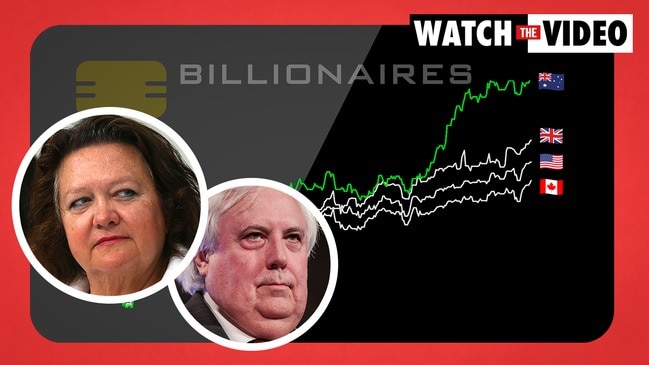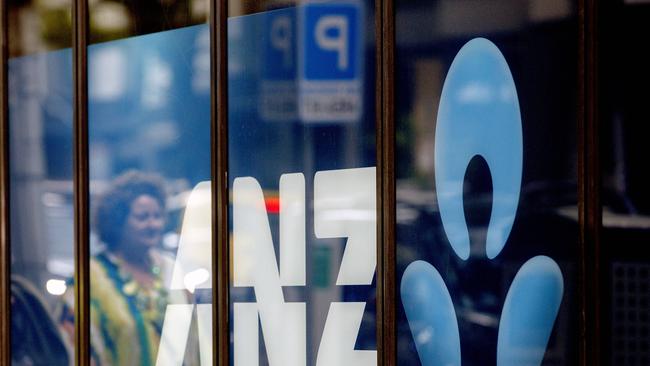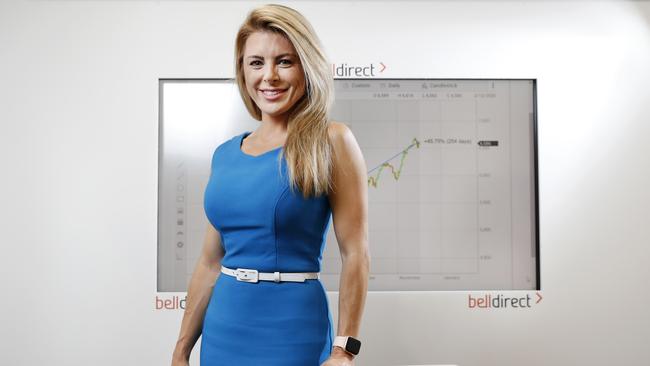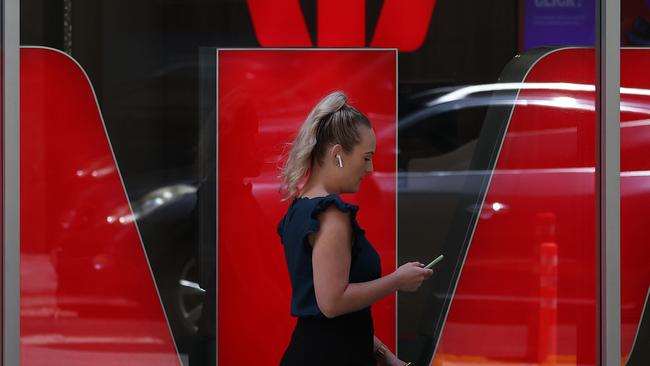Bank shares’ stock exchange surge isn’t over yet, analysts say
After being hammered last year by the pandemic, Aussie banks are surging on the sharemarket, so what comes next?

Business
Don't miss out on the headlines from Business. Followed categories will be added to My News.
“Sexy” is not a word you’d normally use to describe an Australian bank, but there’s no doubt our biggest financial institutions have become more appealing to investors.
After being battered during COVID sharemarket crash and struggling for much of 2020, bank stocks have roared back to strength in recent months, and share analysts say their outlook appears attractive.
ANZ Banking group has been the biggest winner since October, with its share price climbing 49 per cent.
The other big four banks have also impressed: Commonwealth Bank shares are up 27 per cent, Westpac 35 per cent and NAB 38 per cent, while smaller players Bank of Queensland and Bendigo and Adelaide Bank also grew strongly.
Financial stocks were the best performing sector on the stock exchange in the first three months of this year, rising 12 per cent at a time technology and healthcare stocks went backwards.
Despite their rush higher, the banks are still well below the record highs they reached before COVID struck.

DIVIDEND IMPACT
Portfolio manager Chris Conway from investment newsletter Marcus Today said the banks’ latest lustre was because “things didn’t end up being as bad as what everybody thought.”
A year ago there were fears house prices might fall up to 30 per cent amid forced home sales, the recession would be long and deep, and COVID-affected businesses would collapse in huge numbers.
Adding to that general economic worry was the big banks cutting and cancelling their dividends, robbing investors of income that many relied on.
“That had spooked a lot of investors,” Mr Conway said.
“Long-term shareholders hold banks for their dividends. When that was retarded because of COVID, the case for the banks wasn’t so strong.
“They were on the nose for a lot of investors, but now interest in the banks has come flooding back.”
Two weeks from now all major banks except CBA will begin reporting their half-year profits, and investors’ eyes will be watching the dividend announcements.
The COVID cuts to dividends have been sharp. Since the pandemic started:
• ANZ slashed its full-year dividend payments from $1.60 to 60c.
• The Commonwealth Bank’s annual dividend was cut from $4.31 to $2.48.
• Westpac cancelled last year’s interim dividend completely and its annual payout fell from $1.74 to 31c.
• NAB’s full-year dividend dropped from $1.66 to 60c, and it had already lowered it from $1.98 in 2018.
Analysts do not expect bank dividends to return to pre-COVID levels for at least a year or two.

ECONOMIC TAILWINDS
However, a string of strong economic data for Australia is good news.
“Everything that seemed to be a headwind heading into COVID has now become a tailwind,” Mr Conway said.
“Now we’re coming out the other side and the expectation is for rising interest rates. Rising rates are actually good for the banks because it improves their net interest margins.”
Bell Direct market analyst Jessica Amir said banks were being assisted by strong business conditions and record-low interest rates sparking property price surges.
The latest CoreLogic data shows in March Aussie home values climbed at their fastest rate in three decades, while government stimulus for first home buyers and renovators is also sparking demand for lending.
“Banks are making money,” Ms Amir said.
“It means they will return to being among the best dividend payers. At the moment the banking sector is still undervalued, so there still are opportunities for upside.”
Westpac shares potentially had the most upside right now but the entire sector’s outlook was good, Ms Amir said.
“The longer-term technical indicators are suggesting the financial sector is in an uptrend – it’s a good time for investors,” she said.
“The big caveat of this is will any headwinds emerge on the vaccine front?”
Ms Amir said investors might get more bang for their buck by looking beyond the big four to Bank of Queensland and Bendigo and Adelaide Bank.
“It’s good to diversify and not put all your financial eggs in one basket,” she said.

OUTLOOK IMPROVING
Baker Young managed portfolio analyst Toby Grimm said Bank of Queensland’s half-year result last week – a 9 per cent rise in profit – showed conditions were improving.
He said Bank of Queensland and Bendigo might outperform in the future but carried higher risk. The Commonwealth Bank was the lowest-risk bank share but “there’s not a great deal between them”.
“The outlook for earnings has improved dramatically,” Mr Grimm said.
“The potential losses from the pandemic haven’t eventuated and at this point in time look like they won’t eventuate into anything like the concerns we saw a year ago.
“Our big four banks are mortgage banks and there was a big risk of house prices falling and people being no longer able to repay their mortgages … we are now seeing quite the opposite.”
Big four bank bosses appeared at parliamentary hearings in Canberra last week and upgraded their forecasts for houses prices this year.
NAB managing director Ross McEwan said prices could rise “in excess” of 10 per cent this year, while the Commonwealth Bank has upgraded its 2021 forecast from 8 per cent to 10 per cent. CBA said the current price rises were “much lower risk than in previous cycles” because they were broadbased.
Many parts of the banks’ operations became leaner during the pandemic, which is good for profits during their recovery, and the current strong loan growth lowers risk and boosts their business.
“And they’re doing it at better profit margins,” Mr Grimm said.
“Most people expect the economic recovery to continue for several years, and then the banks will be able to pay quite higher dividends.”

MESSAGE TO INVESTORS
The current sweet spot for bank shares might be longer lasting than many investors think.
“I think they are good buying – we expect them to make further gains,” Mr Grimm said.
“Technology and healthcare had the reins for a decade but we think that is changing.”
Stronger economic growth, government stimulus money flowing through households and business, and looming inflation and interest rate rises could see more investors switch to “value” stocks such as banks.
“Banks are one of the few beneficiaries of rising long term interest rates,” Mr Grimm said.
“But you want to temper that with where the market is right now today. We are at very high levels and many would argue the market is due for a little volatility and maybe profit taking.”
Mr Conway said banks represented about 24 per cent of the overall sharemarket and investors could potentially lift their personal weighting in banks to 26 or 27 per cent.
“We don’t see anything on the horizon that would warrant us not holding them,” he said.
“Don’t think they have run too hard yet – don’t anchor your perception of the banks to what’s happened in the last 12 months.”
SIX-MONTH SHARE SPIKE
Bank Gain
ANZ 49%
CommBank 27%
NAB 38%
Westpac 35%
Bank of Queensland 32%
Bendigo and
Adelaide Bank 49%
Suncorp 17%
Source: ASX share price moves since 18 October 2020
Originally published as Bank shares’ stock exchange surge isn’t over yet, analysts say





